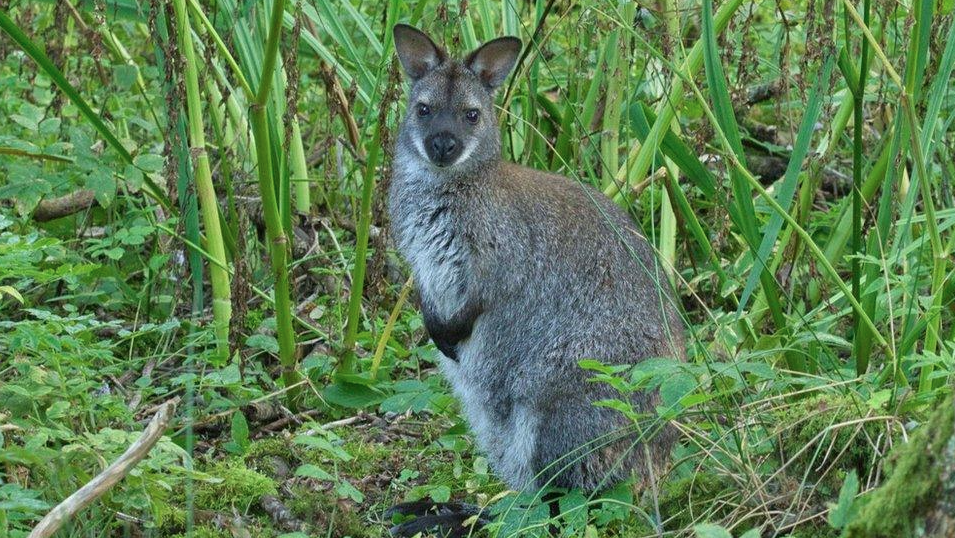The Isle of Man is home to a thriving population of wild red-necked wallabies, thanks to some captive creatures which escaped from Curraghs Wildlife Park in the 1960s. Despite being a non-native animal, originating from South-East Australia and Tasmania, the wallabies have adapted well to the climate. A statement from the Manx Wildlife Trust even said they’re “arguably now a part of modern Manx culture”. So let’s find out more about how wallabies have come to thrive on the Isle of Man.
A brief history of the Isle of Man wallabies
Although specific details are hard to find, the colony of wallabies living on the Isle of Man started from a pair who were reported to have escaped in 1966, just a year after the Curraghs Wildlife Park opened.
They evaded capture and the numbers in the wild have been growing ever since. There were reports of another set of escapees in 1989 when eight wallabies dug out under their enclosure. Now, the red-necked wallabies are the largest land animal with a widespread Manx distribution.
To date, the Isle of Man has taken a hands-off policy, so the population of wallabies (which are similar to kangaroos, but smaller in size) hasn’t been managed in any way. Opinions on the wallabies do vary, with some loving the opportunity to spot the animals and others having valid concerns about the impact on native wildlife and habitats. Whatever your stance, the wallabies have now thrived in the temperate climate found on the Isle of Man for over 50 years.
How many wallabies are on the Isle of Man?
The latest estimates of adult wallabies on the Isle of Man is between 869 and 1,050, thanks to successful population growth which exceeded the numbers many people thought. The survey, prepared by BH Wildlife for the Isle of Man Government, used thermal imagery equipment mounted onto drones, to understand the wallaby populations in terms of distribution and density. It found wallabies at a density of 140 per 1㎢.
Where to see the wallabies
The Isle of Man wallabies are mainly found on the north of the island, in the Ballaugh Curraghs area, and this is where the original wallaby survey focused its efforts.
However, there have been reports of sightings all around the island, including in Ramsey Forest and on the western side of Ballaugh Glen. The wallabies enjoy grasslands and wooded areas, roaming wild and eating the grass, plants, bark and shrubbery, being mostly active at dusk and nighttime.
You can walk in the Curraghs area yourself, or join specific tours on the lookout for wallabies. Locals do say they’re relatively easy to find if you just know where to look. Spotting the creatures, although they are non-native to the island, is one of the lesser-known reasons to visit – think of it as the Isle of Man’s furry secret.
Why is the Isle of Man a great habitat for wallabies?
You might assume that marsupials normally associated with Australia would prefer a climate more consistently warm and sunny than the Isle of Man. But wallabies are also native to Tasmania, where it’s wetter and cold, so the conditions in the Manx marshland have been “almost perfect” to support the expanding population, Manx Wildlife Trust chief executive Leigh Morris said.
The fact that there are no natural predators on the island and no attempts to control the population has also contributed to the fact it's been a great habitat for the wallabies.
Because it’s recognised as an internationally important site, the wetlands in Ballaugh Curragh where the population is thought to be concentrated isn’t densely populated or intensively farmed either. But that does highlight some of the concerns around the Isle of Man wallabies; whether the number is sustainable and if they’re having a detrimental impact on native species. For now, the wallaby numbers will simply be monitored while they enjoy their home.
Find the wild wallabies on your trip to the Isle of Man with Steam Packet Ferries
Come and see the wild wallabies for yourself. The easiest way to get to the Isle of Man is by ferry – a scenic route with plenty of flexible booking options from Steam Packet Ferries. We have year-round services so you can enjoy the wildlife, countryside and much more at a time that suits you.
